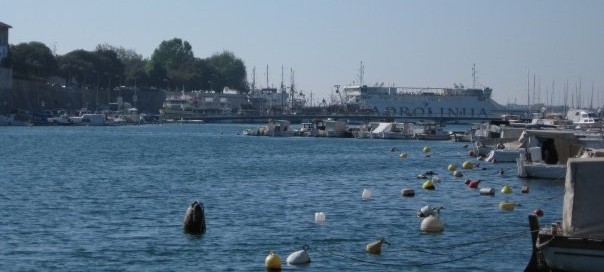For the next part of the trip I will be working with Lorenzo Storai (his picture is below). Lorenzo is employed by Casalini, an Italian book distributer in Fiesole near Florence that our university uses to purchase foreign language books. He’s been going through the various lists their bibliographers have generated of titles published by and about the Italian minority communities. As a result, it is now much easier to see what these private presses have published or co-published and whether there are any overall themes or trends. On Monday I will go Casalini’s offices and review the 20 or so books he brought back from our visits to the University of Trieste and individual Istrian organizations in the city.
I have the gut feeling that this nascent bibliography and brief history will prove to be quite useful. These books belong almost in the category of ephemera. Those that have been subsidized by the Italian government cannot be sold and the rest are produced in small press runs. It was quite sobering to find out when we arrived that Libreria Internazionale Italo Svevo Di Zorzon Sergio, the major publisher of these books, has closed, a victim of overexpansion perhaps and a bad economy. Part of its backlist has been purchased by other publishers.
Lorenzo and I met with the President of Trieste University, Renzo de Vidovich, who talked to us about the well-organized three-pronged strategy of the Unione Italiana to support the minority populations in Istria, Slovenia and Croatia, namely, education, publications, and cultural events.
In addition to Dr. de Vidovich we met Dr. Piero Delbello, the director of the Istituto regionale per la cultura istriano-fiumano-dalmata, who showed us the institution’s publications. He also talked to us about the events leading the the founding of these associations and institutions: the exodus of possibly 350,00 Istrian Italians from Yugoslavia in the late 40s and 50s, the complicated issue of property compensation, and the very different experience of the Italians in Dalmatia and Istria. Lorenzo and I also met with members of the Circolo di cultura istro-veneta, another cultural organization. The president of the organization, Livio Dorigo, gave an excellent analysis of the complicated situation of the Italian minority population–one might even call it a paradoxical situation–that involves historical events beyond anyone’s control–the two world wars in the middle part of the twentieth century and the division of spoils afterwards.

